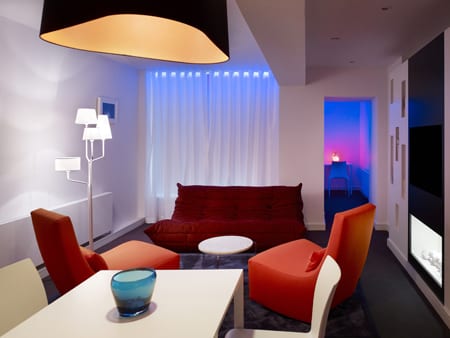Photos by Tom Dubanowich; Jim Schafer, Jim Schafer Location Photography Inc.; Karen Shell, Shell Photographics LLC; and Chris Crumley, Chris Crumley Productions Inc.z
In the quick-service restaurant (QSR) category, top-of-mind brands maintain success. When hunger strikes, the consumer thinks and acts fast. Dublin, Ohio-based Wendy’s International Inc. has spent more than three years under self-examination in an effort to understand its customer and revitalize its brand. Its commitment to fresh food is unwavering, as is its devotion to key traditions within Wendy’s brand history. Still, times are changing, and Wendy’s is also committed to its evolving customers. For its dedicated patrons, as well as a new generation awaiting an introduction, Wendy’s is redefining its QSR experience.
“In the quick-service industry, you have to be top of mind to remain relevant,” says Denny Lynch, a spokesperson for Wendy’s. “Our food was good, our operations were good-but we needed to be current.”
The company conducted extensive research to uncover important operational data and consumer input, and weigh financial implications. From there, four restaurant prototypes emerged that received positive feedback. Wendy’s decided to simultaneously implement all four prototypes in regions across the country to truly measure customer response and evaluate the practicality, functionality, and operational efficiency of the designs.
“All of the designs come from a common design strategy,” describes Trè Musco, president and chief creative officer of San Francisco-based Tesser, which led the creation of the Wendy’s design strategy and the four prototypes. “All of the buildings push the brand forward and highlight the quality of the food, while staying true to the important brand values. We had to move Wendy’s forward with a contemporary edge without leaving the quality and tradition behind.”
While each prototype explores unique elements, a few fundamental changes occurred across all of the test locations. In order to guide how people move through the space, Wendy’s now creates a queue on one side of the restaurant that moves patrons through a process of “order, food preparation and pay,” from left to right. Preview menu boards help customers relax during the ordering process and encourage them to try new things. Lounges with fireplaces and wi-fi bars with plug-in capabilities add a new element to the design. Seating options include a variety of high and low tables, more booths, and even a family-size booth.
“The challenge was how to develop these changes into a remodeling package that makes a big enough impact,” Musco says. “There has to be a balance between too much to afford and too little to notice.”
The new prototype formats include UltraModern, Contemporary, Urban, and Traditional, each of which explores a variety of design details, material selections, and graphic packages. With each in place, the analysis will continue until the right combination emerges for a final design.
“The consumers have noticed the four prototypes; they have attracted their attention,” Lynch says. “The designs have done what they were intended to do. Now, we need enough time to measure the reaction and feedback before we can make prudent decisions on what components go forward and what do not. All aspects won’t go into the future design, only what resonates the most.”
UltraModern
Columbus, Ohio, and Canada
“The UltraModern concept was based on Midwestern contemporary architecture and was inspired by Frank Lloyd Wright,” says Tré Musco, Tesser.

A red blade element boldly cuts through the space, creating impact on both the interior and exterior, and 14-foot windows at the front allow ample daylight to penetrate the restaurant. While lines and forms were kept simple and clean to achieve a contemporary and sleek aesthetic, material selections add warmth. Limestone-like Silestone mixes with a wood-patterned tile and a reed-inspired 3form to add richness to the space.
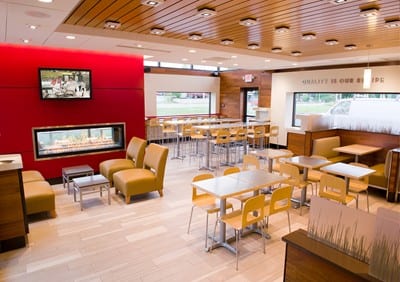
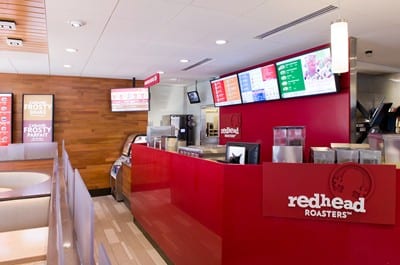
Contemporary
Pittsburgh
Contemporary meets retro in this prototype, with bold details that create impact. Light penetration is again a priority, with floor-to-ceiling and side-to-side glass, as well as the use of Wendy’s signature red. Super graphics at the entrance vestibule welcome customers to the Heartland with a clear message: “Welcome to real…to fresh…to Wendy’s Pittsburgh.”


Metallic paneling, frosted acrylic glass and a stacked-stone central fireplace provide the contemporary edge, while darker walnut floors and butcher-block tables infuse warmth into the space.
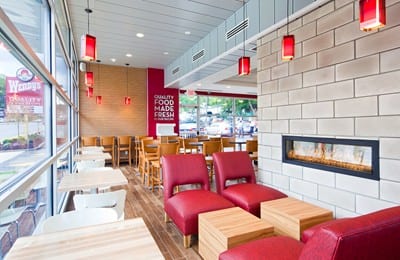
Urban
Phoenix
Agricultural elements are reinterpreted in the Urban prototype. Inspired by grain silos and water tanks, the design features a bold red silo that creates impact from the exterior to the interior.
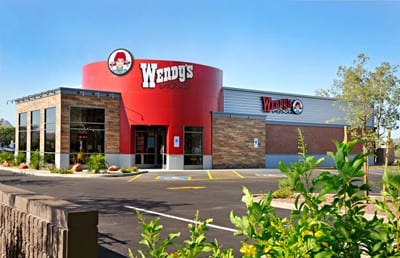
Industrial meets contemporary with a combination of materials, such as concrete-like tile floors, brick work with formed steel slats and a fireplace clad in blackened steel, as well as a ceramic wood tile that resembles reclaimed barnwood. Metal chairs, some even painted red, continue the modernist approach to the space, while the art graphics sprinkle the tradition of the Wendy’s story throughout the interior.
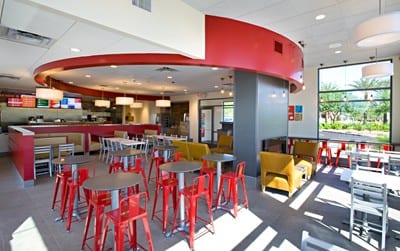
Even the desert setting of Phoenix is testing the ambience of a fireplace. In this location, an LED light show behind a seamless sheet of glass emerges long and low on the wall, adding a glow to the area.
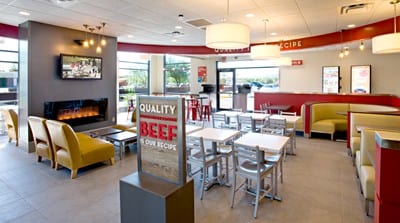
Traditional
Virginia Beach, Virginia
Old stone water towers and East Coast farmlands provide inspiration for the Traditional prototype. The design team played with scale and details in order to take a fresh approach to the more traditional design concept.

A dry stacked-stone tower serves as an exterior focal point with large-scale divided light windows, red barn-like cladding, and a gentle undulating parapet to mimic rolling hills. An outdoor seating area defined by a post-and-plank fence with a “W” gate injects a little flare to an outdoor setting.
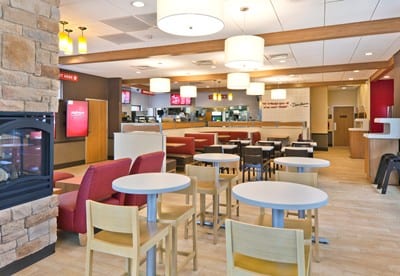
A big, bold, red entry wall greets customers with the branded Dave seal of approval. Inside, wood-like ceramic tile, chocolate-brown walls, and a stacked-stone fireplace create a sense of warmth and
encourage patrons to settle in and stay awhile.


